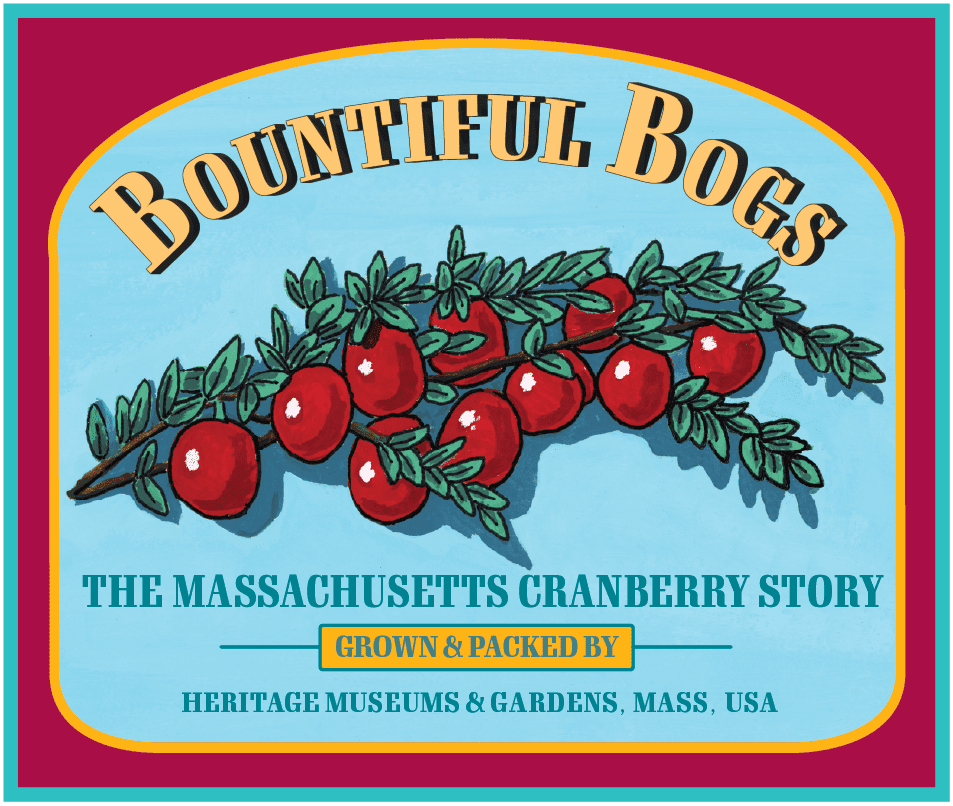Cape Cod Artists of Impressionist New England
By Amanda Wastrom, Curator
Cape Cod has inspired painters for generations now. In the story of American Impressionism, this region plays a major role, mainly thanks to the Provincetown Art Colony. Around the early 1900s, Provincetown was a major summer destination for artists, particularly those living in Boston and New York City. Like other New England art colonies such as Gloucester, Massachusetts, Mystic and Old Lyme, Connecticut, and Ogunquit, Maine, Provincetown was ideally suited to artists’ needs. It was easily accessible by train. It offered cheap rent and a welcoming atmosphere (as an example, Provincetown fishermen would leave their extra catch on the docks for artists–a free fish dinner!). The scenery was picturesque and could offer an Impressionist artist a variety of subjects including seascapes, landscapes, and charming town scenes. And who can forget the allure of Provincetown’s famous light, granted perhaps, by the fact that it is surrounded on all sides by water. Once the artists started coming, they didn’t stop, which meant camaraderie and stimulating company.
Thanks to private collectors and institutions such as the Provincetown Art Association and Museum and the Cape Cod Museum of Art, we are able to include many local Cape Cod painters and locations in the Impressionist New England exhibition. Highlighted below are a few of our favorites.
If any name is synonymous with the Provincetown Art Colony, it is arguably Charles Webster Hawthorne. He wasn’t the first artist to arrive in Provincetown, but he was the first to start a formal art school, named the Cape Cod School of Art in 1899. For the next thirty years, he would teach thousands of students, emphasizing color relationships and the importance of painting outdoors. “Painting,” he said, “is just getting one spot of color in relation to another spot…. Let color make form, do not make form and color it.” In “Girl Sewing #1,” a woman, dressed in white, sits elegantly by the light of a window. Painters like Hawthorne often relished the challenge of painting white clothing–so many subtle color combinations to discover! When Hawthorne died in 1930, artist Henry Hensche stepped in to continue Hawthorne’s legacy and his teachings.
Charles Webster Hawthorne (1872-1930), Girl Sewing #1, c. 1923, oil on board, collection of the Provincetown Art Association & Museum, Gift of Joseph Hawthorne
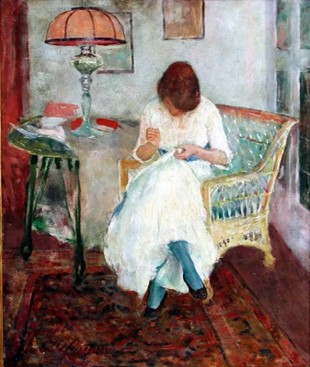
John Whorf is considered one of the finest watercolorists of the twentieth century. John Singer Sargent was an early supporter, purchasing a painting at Whorf’s first solo show in Boston (which subsequently sold out) and going on to teach the young artist. Whorf had strong family ties to Provincetown and first arrived there at the age of fourteen. He studied under Charles Hawthorne and made friends with older artists. But adventure called and he left to study painting in France. After travels and studies in Europe, he returned to Provincetown and spent his remaining years there, working out of a studio on Vine Street. Painting was a family trade for the Whorfs as two of John’s daughters, Nancy and Carol, became accomplished artists as well.
John Whorf (1903-1959), Figures at the Shore, watercolor on paper, collection of Provincetown Art Association & Museum, Norman and Dorothy E. Cook Collection, Gift of Dorothy E. Cook, 2000
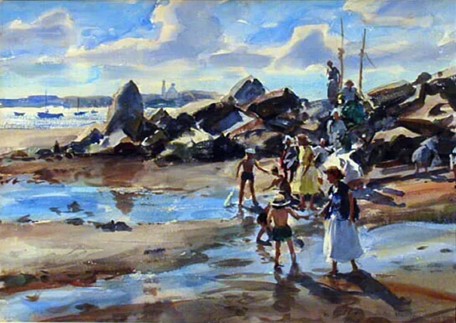
Sheila Benzer lived and painted in Provincetown for many years, studying under Henry Hensche. Hensche often told his students, “an Impressionist (plein-air) painting done well will tell you the time of day and time of year, weather and even where it was painted as light effects change dramatically in different areas of the world.” That certainly holds true for this piece, borrowed from the Cape Cod Museum of Art. Benzer knew she was to be an artist at age 5, after seeing Monet’s paintings in New York City. She believed that painting in the Impressionist tradition was a way to capture the truth of light and color as it is in nature.
Sheila Benzer (born 1961), Highland Path, 1998, oil on panel, collection of Cape Cod Museum of Art, Anonymous Gift in Honor of Mr. Robert Duffy

As an avid sailor and fisherman, Frank Vining Smith loved the outdoors, and his paintings often feature these subjects. He also loved Cape Cod, which he had visited every year since his childhood. “Wellfleet Sunset” (shown here) is part of the Cape Pictures Proposition, a collaborative project between Smith and his friend and patron, J.K. Lilly Jr. (the father of J.K. Lilly III, founder of Heritage Museums & Gardens). Concerned about how fast Cape Cod was changing, the two men conceived of a series of paintings documenting the Cape around the mid-twentieth century.
Frank Vining Smith (1879-1967), Wellfleet Sunset, c. 1950, oil on masonite, collection of Heritage Museums & Gardens
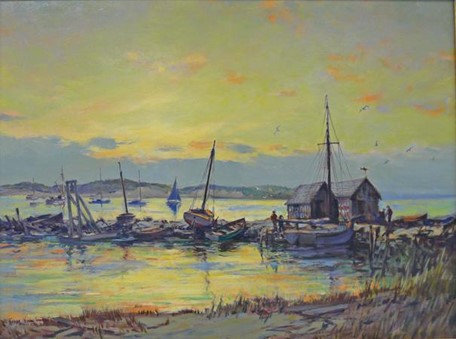
Contemporary Impressionist artist Sam Barber first studied in New York City then made his way to Provincetown. He has lived and worked here on Cape Cod for many years. Of his work he says, “Being an artist allows me to communicate and express what I see in nature. It lets me absorb the beauty and replay it on canvas. In the end, my true rewards are seizing a moment of beauty from this incredibly complex and wonderful world, bringing that interval of joy to people, and seeing that emotional connection in their eyes.”
Sam Barber (born 1943) , Sandwich in the Snow, 1982, oil on canvas, collection of Heritage Museums & Gardens
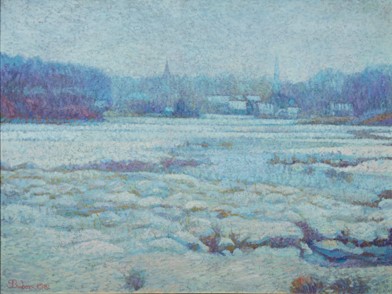
Artists Doug Rugh and Hillary Osborn share their lives, as husband and wife, and also their artistic careers as they sell their paintings out of Osborn & Rugh Gallery in Falmouth. They are both committed to painting from life and can often be seen around town in the summer time with their easels. Doug’s atelier-style training at the Schuler School of Fine Arts in Baltimore, Maryland gave him a thorough understanding not only of draftsmanship, form, and composition, but also of traditional techniques such as making his own paint.
Doug Rugh (Born 1964), Peonies at Bourne Farm, 2019, oil on canvas, courtesy of Osborn & Rugh Gallery, Falmouth, MA
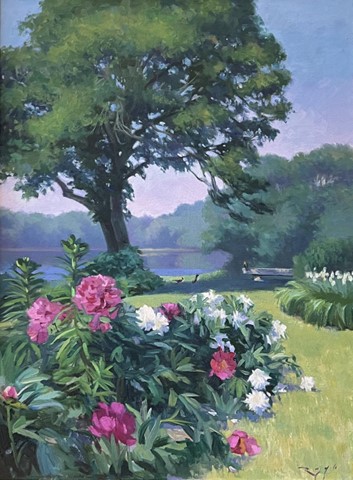
You can see Hillary Osborn’s love for abstraction in the strong shapes of her compositions. Of her process and influences, Osborn says, “One element that I come back to again and again in composing a picture is balance. It may be with shape, color, space or line. I look for it in subtle or understated ways. I admired many abstract artists’ work and was strongly drawn to them when I studied art history in school. Painting directly from life challenges me to look for that stability in my environment.”
Hillary Osborn (Born 1965), Late Summer Bog, 2021, oil on canvas, courtesy of Osborn & Rugh Gallery, Falmouth, MA
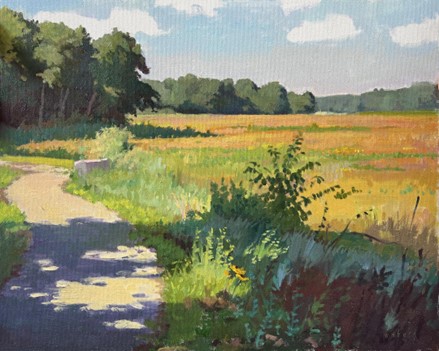
This is only a small sampling of works by Cape Cod artists included in the Impressionist New England exhibition. Come and visit to see more!




